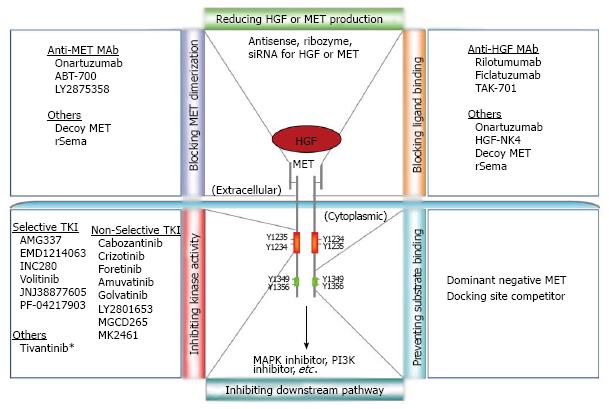Copyright
©The Author(s) 2015.
World J Biol Chem. May 26, 2015; 6(2): 16-27
Published online May 26, 2015. doi: 10.4331/wjbc.v6.i2.16
Published online May 26, 2015. doi: 10.4331/wjbc.v6.i2.16
Figure 1 MET-targeted therapeutic strategies and inhibitors.
Many strategies have been explored to inhibit MET signaling: blocking ligand binding or receptor dimerization; inhibiting MET kinase activity; preventing substrate binding; reducing hepatocyte growth factor (HGF) or MET production; and inhibiting downstream pathways. Shown in the diagram are representative inhibitors in each category, many of which are in clinical trials. Y1234 and Y1235 are two essential tyrosine residues in the TK-domain of MET, and Y1349 and Y1356 in its docking site are key tyrosine residues for substrate binding. Tivantinib is a non-ATP-competitive, selective MET inhibitor, but it also exhibits MET-independent antitumor activity by inhibiting microtubules. rSema: Recombinant MET Sema domain fragment.
- Citation: Zhang YW. Promise and challenges on the horizon of MET-targeted cancer therapeutics. World J Biol Chem 2015; 6(2): 16-27
- URL: https://www.wjgnet.com/1949-8454/full/v6/i2/16.htm
- DOI: https://dx.doi.org/10.4331/wjbc.v6.i2.16









